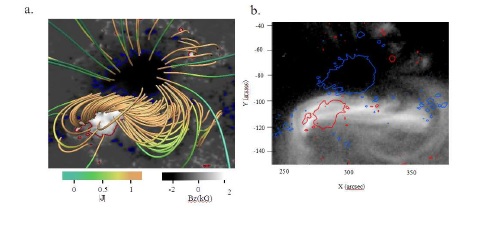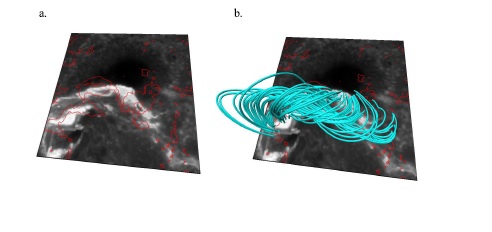Johan Muhamad & Kanya Kusano (Nagoya University)
Solar flare unleashes large amount of energy to the interplanetary space. It can disrupt satellite operation and radio communication on Earth as well as other space based technologies. Therefore, it is very important to understand the solar flare trigger mechanism to predict the onset of solar flare. One of the methods that can be used to study the solar flare trigger mechanism is by magnetohydrodynamic (MHD) simulation. Kusano et al. (2012) pioneered the use of MHD simulation on this study by imposing small bipole flux on to the linear force-free field structure in order to reveal the magnetic structure that effective to trigger a flare. They found that small emerging bipole flux with the orientation opposite to shear components (Reverse Shear/RS) and potential component (Opposite Polarity/OP) of the large-scale field can trigger an eruption.
In the recent study, Muhamad et al. (2017) extended the concept of flare trigger mechanism in the simulation by Kusano et al. (2012) to the real photospheric magnetic field data observed by the Hinode satellite. They extrapolated coronal magnetic field of the Active Region NOAA 10930 based on the non-linear force-free field (NLFFF) extrapolation method. This NLFFF extrapolation method could provide more realistic structure of the coronal field than the previous study (Figure 1). They used this NLFFF model of the AR 10930 as an initial condition that they performed MHD simulation by imposing small bipole structure with various orientations on to the model. In this simulation, they succeeded to find the magnetic structure responsible to trigger the X3.4 flare on December 13, 2006. They could also reconstruct synthetic flare ribbon shape correspond to the real flare ribbon observed by Hinode/SOT (Figure 2). From this simulation, it could be confirmed that the magnetic structure in that trigger X3.4 flare on December 2006 was the OP-type structure that occurred in between the main positive and negative polarity spots of AR 10930.
In addition, their simulations also demonstrated that small scale magnetic field of the RS-type is capable to trigger flare in this region. Therefore, this study suggests that the MHD simulations constrained by the observed data of magnetic field on the solar surface is a powerful tool to examine the trigger process of flares and also to predict the probability of flares numerically.

Figure 1. (a) Extrapolation of the coronal magnetic field based on the vector magnetic field data obtained by Hinode/SP instrument. (b) Comparison from the observation of the magnetic field structure from the observation by Hinode/XRT instrument.

Figure 2. (a) Reconstruction of the synthetic flare ribbon (red contour) made by the simulation and the comparison with the observed ribbon structure by the Hinode/SOT, and (b) its corresponding magnetic field lines traced from the ribbon location.
References
K. Kusano, Y. Bamba, T. T. Yamamoto, Y. Iida, S. Toriumi, and A. Asai, 2012, Magnetic Field Structures Triggering Solar Flares and Coronal Mass Ejections, ApJ 760 31, doi.org/10.1088/0004-637X/760/1/31
J. Muhamad, K. Kusano, S. Inoue, and D. Shiota, 2017, Magnetohydrodynamic Simulations for Studying Solar Flare Trigger Mechanism, ApJ 842 86, doi.org/10.3847/1538-4357/aa750e
